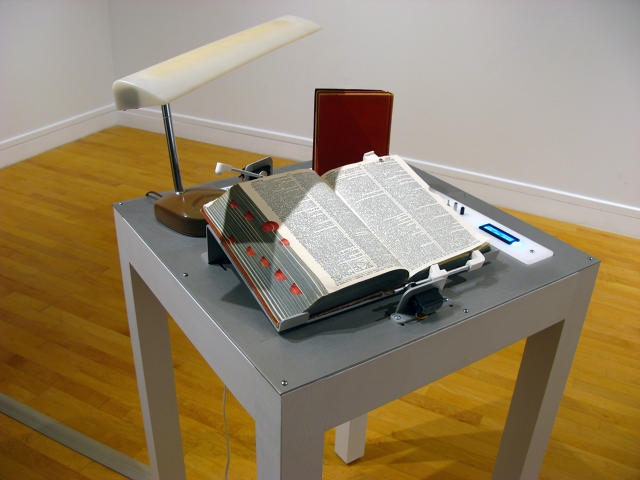We build wheelchairs for paraplegics, prosthetic limbs for amputees, yet we ignore the biggest disability of all: death. Why don't we design devices for the dead to communicate with? In an old San Francisco mortuary-turned-gallery space, two morbid artists are doing just that as part of a new exhibition, After Life.
First, there's the art of New York-based Fernando Orellana, who—with tongue planted firmly in cheek—creates magical interfaces between the living and the dead. Orellana mounts a beloved object of a deceased love one in a sleek, wall-mounted box. Sensors then detect minute changes in temperature, infrared light, or electromagnetic energy (the same things that professional ghost hunters look for). If any two of those three things fluctuate at the same time, the box sets the departed's object whirring into motion, whether it's a dictionary, a religious idol, or a Mr. Peanut peanut grinder.
The other artist, San Francisco-based Al Honig, creates idiosyncratic funeral urns out of found objects. Built at human scale, they come in the shapes of spread-eagle birds and '50s-style robots. The idea is to better represent an individual in death by creating an eccentric, personalized avatar for his or her ashes.

Ultimately, the question both Orellana and Honig's art asks is this: Is there a better way to use the things we leave behind to immortalize us? Whether by turning the belongings of the departed into the power sources of otherworldly UIs, or creating sculptural avatar to human quirks, both artists remind us that we leave more behind us when we die than just corpses.
Curated by Valerie Leavy, After Life will run until August 8 at the Incline Gallery in San Francisco. You can find out more information about the exhibit here.